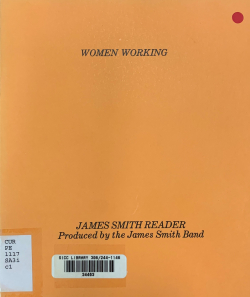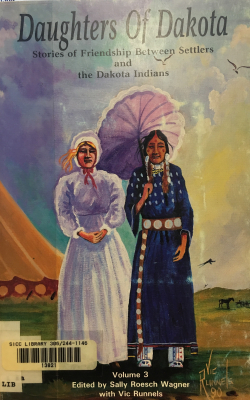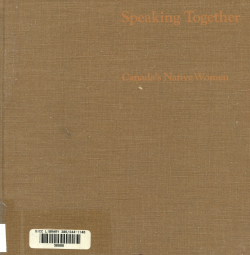Dakota women's work : creativity, culture, and exile

Type
Book
Authors
Colette A. Hyman ( Hyman, Colette A. )
ISBN 10
0873518500
ISBN 13
9780873518505
Category
General Library Collection
[ Browse Items ]
Publication Year
2012
Publisher
Pages
240
Subject
Dakota women
Tags
Beadwork, Women's Studies, Gender Studies, Dakota, Dakota women -- History, Dakota women -- Social conditions, Dakota women -- Economic conditions, Dakota women, Dakota -- Material culture, Dakota -- Social life and customs, Dakota beadwork, Indigenous beadwork, Indigenous leatherwork, Leatherwork, Quillwork, Star quilts, Cradleboards, Women, Indigenous women
Abstract
"A tiny pair of beaded deerskin moccasins, given to a baby in 1913, provides the starting point for this thoughtful examination of the work of Dakota women. Mary Eastman Faribault, born in Minnesota, made them almost four decades after the U.S.–Dakota War of 1862. This and other ornately decorated objects created by Dakota women—cradleboards, clothing, animal skin containers—served more than a utilitarian function. They tell the story of colonization, genocide, and survival.
Author Colette Hyman traces the changes in the lives of Dakota women, starting before the arrival of whites and covering the fur trade, the years of treaties and shrinking lands, the brutal time of removal, starvation, and shattered families after 1862—and then the transition to reservation life, when missionaries and government agents worked to turn the Dakota into Christian farmers. The decorative work of Dakota women reflected all of this: native organic dyes and quillwork gave way to beading and needlework, items traditionally decorated for family gifts were produced to sell to tourists and white collectors, work on cradleboards and animal skin bags shifted to the ornamenting of hymnals and the creation of star quilts.
Through it all, the work of Dakota women proclaims and retains Dakota identity: it is a testament to the endurance of Dakota traditions, to the survival of the Dakota in exile, and—most vividly—to the role of women in that survival."--Back cover.
Author Colette Hyman traces the changes in the lives of Dakota women, starting before the arrival of whites and covering the fur trade, the years of treaties and shrinking lands, the brutal time of removal, starvation, and shattered families after 1862—and then the transition to reservation life, when missionaries and government agents worked to turn the Dakota into Christian farmers. The decorative work of Dakota women reflected all of this: native organic dyes and quillwork gave way to beading and needlework, items traditionally decorated for family gifts were produced to sell to tourists and white collectors, work on cradleboards and animal skin bags shifted to the ornamenting of hymnals and the creation of star quilts.
Through it all, the work of Dakota women proclaims and retains Dakota identity: it is a testament to the endurance of Dakota traditions, to the survival of the Dakota in exile, and—most vividly—to the role of women in that survival."--Back cover.
Description
240 pages : illustrations, maps ; 23 cm.
Biblio Notes
Contents:
Introduction: Women, work, and survival --
Work, art, and Dakota subsistence --
The fur trade and the Treaty of 1837 --
Gender and resistance --
Separate survival --
Dakota tradition at Santee and Flandreau --
Work, gender, and the Dakota church --
Epilogue: Indian renaissance and Dakota women's art.
Introduction: Women, work, and survival --
Work, art, and Dakota subsistence --
The fur trade and the Treaty of 1837 --
Gender and resistance --
Separate survival --
Dakota tradition at Santee and Flandreau --
Work, gender, and the Dakota church --
Epilogue: Indian renaissance and Dakota women's art.
Number of Copies
1
| Library | Accession No | Call No | Copy No | Edition | Location | Availability |
|---|---|---|---|---|---|---|
| Main | 38872 | E99.D1 H96 2012 | 1 | Yes |




